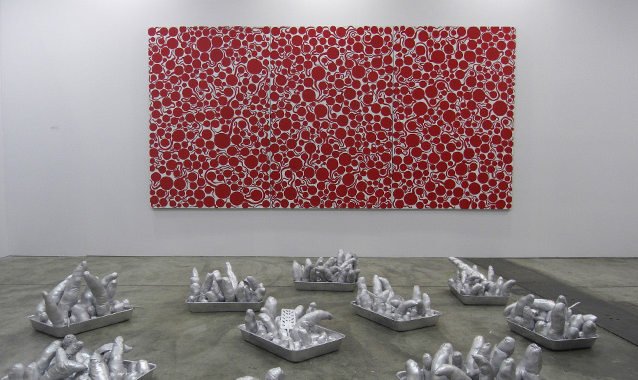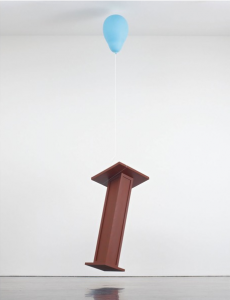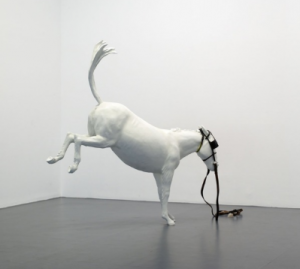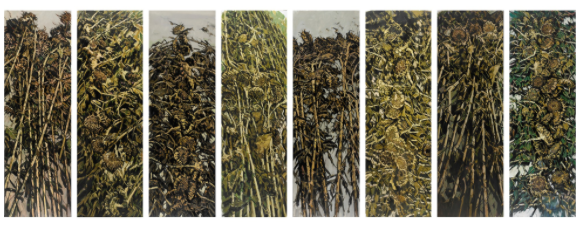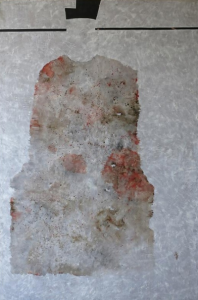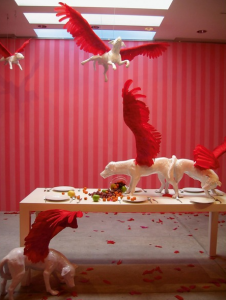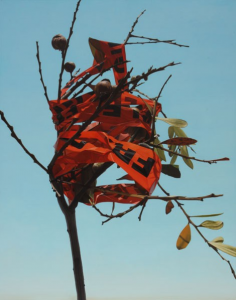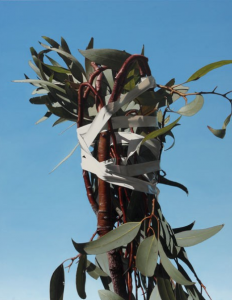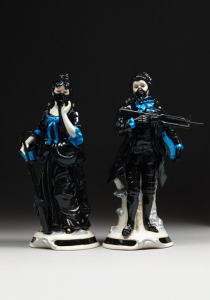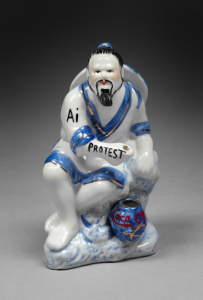Hong Kong is said to have got its name from the smell of incense stored in warehouses by the waterfront. Nowadays in “the fragrant harbour” the dominant smell is that of money, and it’s a perfume most residents find highly agreeable. There was a certain tang in the air last week, as the increasingly successful Hong Kong Art Fair, now in its sixth year, was rebranded as Art Basel Hong Kong.
Beyond its spiritual attributes, art has always played a prominent role in the beautification of money. It was, therefore, only a matter of time until Hong Kong realised there was one lucrative market it had yet to explore. With vast new fortunes being made on the mainland, and the great desire of China’s millionaires to have all the good things enjoyed by their western counterparts, Hong Kong has become a natural destination for enterprising art dealers.
The leaders in the field are now akin to multinational corporations, with branches around the world. Larry Gagosian, for instance, has eleven galleries: three in New York, two in London, and one each in Los Angeles, Paris, Rome, Athens, Geneva – and Hong Kong. Jay Jopling’s White Cube has two galleries in London, plus outlets in Sao Paolo and Hong Kong.
This year, Lehmann Maupin has opened in Hong Kong, joining other international brands such as Emmanuel Perrotin, Ben Brown and Simon Lee. At the same time there is a thriving local gallery scene, which includes venues such as Osage, Pearl Lam, Schoeni, 10 Chancery Lane and Cat Street.
With all this activity it was a logical move for the MCH Group of Switzerland, which runs the world’s two biggest contemporary art fairs, in Basel and Miami, to buy into Hong Kong. Within a few years Hong Kong had established itself as the leading art market event in Asia, streaking ahead of its rivals in cities such as Singapore, Shanghai, Taipei and Seoul.
Hong Kong’s success was not simply due to its close proximity to China, it owed a debt to founding director, Magnus Renfrew, whose vision for the fair was a truly global one. While Art Basel in Basel (as it is now known!) has long been a showcase for the world’s richest and most powerful dealers – which means Europe and America – Hong Kong presents more of a level playing field. The organisers emphasise that at least fifty percent of the fair is devoted to Asian galleries, along with dedicated space for dealers from other outposts of the art world, such as Australia.
Another distinction of Renfrew’s model was that Art Hong Kong has made room for many young and emerging galleries. This allowed small scale, alternative venues to have a presence at the fair, having been selected by a committee of peers that favours the most original and impressive applications. In Basel such galleries can only be found in the satellite fairs.
The first thing one notices about Art Basel in Hong Kong, is that the presentation looks much more spacious than in previous years. The number of participating galleries has been reduced slightly, from 266 to 245, and the design of the booths improved. The lighting has been upgraded, and the VIP area is a more opulent affair, largely thanks to the sponsorship of Davidoff – Swiss makers of expensive luxury goods.
It could be argued that contemporary art itself is an expensive luxury item tailored to a certain lifestyle, yet this does not present a fair reflection of the Hong Kong’s mix of old and new, rich and poor galleries from 35 countries and territories
The main galleries section featured 171 participants. A special section called Insights, devoted to art from Asia and the Asia-Pacific region, added another 47 dealers to the mix. The final 37 were included in a section called Discoveries, made up of solo and two-person shows by artists from around the world. Spread throughout the fair were 17 large-scale installations selected by Tokyo curator, Yuko Hasegawa.
The variety of exhibitions, along with a lively program of talks and forums, helped promote the pleasing illusion that the art fair was for the benefit of art lovers rather than art investors.
As in previous years there was a sense that some of the big dealers were not putting their best foot forward. The Hong Kong fair is sandwiched between Frieze New York (10-13 May) and Art Basel (13-16 June), which acts as a disincentive for many European and American collectors. As a consequence, there are dealers who are content to send a stock room show to Asia, and save their masterpieces for next month.
Although the new owners originally planned to move the fair to February, this wasn’t feasible because it would clash with the Chinese New Year and eliminate many local clients.
The major topic of conversation, as usual, was whether the fair was better or worse than last year. My own feeling was that the layout may have been better but the quality of work was a little flat. There were a lot of galleries that looked good, but not many that might be called outstanding. However, this didn’t seem to communicate itself to buyers, who were spending freely enough.
An early highlight among sales was a triptych full of writhing red dots, called Flame of Life – Dedicated to Tu-Fu by Yayoi Kusama. It went for US$ 2 million, sold by Victoria Miro/Ota Fine Art “to an Asian collector”. It was one of 15 pieces by Kusama sold by these dealers on the first day. The second biggest price was paid for Quarteto, a work by Fernando Botero, sold by Galerie Gmurzynska of Zurich, for US$ 1.3 million to “a Malaysian collector.”
By the second evening, Tina Keng, of Tapei and Beijing, could boast of having sold works by Xu Jiang, from the series Eight Tall Sunflowers, to the value of US$2.8 million. The following day, the same gallery reported the sale of Wu Huaiqing’s Chinese Emperor 1 for US$ 2.6 million. These sales were only the cherry on top. There were dozens of works offloaded for sums in excess of US$ 500,000, by galleries from all around the world. The fact that top prices should be paid for Asian artists such as Kusama, Yoshitomo Nara, Zhang Xiaogang, Xu Jiang and Wu Huaiqing, suggests that local collectors are competing for quality works within their own region rather than hankering for scraps from American and European stockrooms.
There were eight Australian galleries included in this year’s fair – Roslyn Oxley9, Sullivan + Strumpf, and Andrew Jensen from Sydney; Ryan Renshaw from Brisbane; Tolarno, Diane Tanzer, Neon Parc, the Murray White Room, and Utopian Slumps, from Melbourne. It was an eclectic selection, with the smaller venues such as Neon Parc and Utopian Slumps, putting on low-key solo shows that defied the taste for spectacle. Tolarno followed that great Australian adage: ‘When you’re on a good thing, stick to it,” by concentrating on ceramics and paintings by Brendan Huntley, who was a sell-out at last year’s fair. Once again everything sold, often to the very same collectors.
The other exceptional result came from Diane Tanzer, who disposed of her entire exhibition of eight paintings by Juan Ford, for US$ 150,000. It was a reward for an imaginative presentation, with Ford’s paintings presented on screens featuring images of a pale, scrubby Australian bush landscape. Sullivan + Strumpf were no less daring in their solo exhibition of work by ceramic artist, Penny Byrne, called iPROTEST, which featured 300 small, kitsch porcelain figures, standing for trouble-spots all over the world. It was a piece that deserves to be acquired by a museum, but buyers were proving elusive.
Australian collectors were out in force, taking advantage of the lingering strength of the Aussie dollar before it sinks once more beneath the horizon. When this happens it may encourage collectors to do more of their shopping at home, but by now the taste for these international art fairs is well advanced. In the new, globalised world of art many collectors have begun to enjoy feeding their habit at fairs in Hong Kong, Basel, Miami, or any one of a dozen other cities, while paying fewer visits to hometown dealers.
A couple of notable Australian purchases came to light during the fair, including Play 201301 a gigantic leather-clad installation by China’s MadeIn Corp., acquired by Sydney’s White Rabbit Gallery, from the Long March Space, Beijing. A floating Gothic cathedral in bondage, it should be right at home in sinful Sydney. Meanwhile, Berlin dealer, Matthias Arndt, sold an extravagant sculpture covered in pink blossoms, by Indonesian artist, Eko Nugroho to “an Australian Museum”. The price was US$ 54,000, which may prove to be a good investment, considering the increasing enthusiasm with which collectors are responding to a new wave of Indonesian artists.
Overall the Swiss entrepreneurs behind the new-look fair can feel pleased with their journey to the east. Sales were strong, the dealers seem to have enjoyed themselves, and fears of rampaging European cultural imperialism have been laid to rest – at least for another twelve months.
Art Basel Hong Kong, 2013; Hong Kong Convention and Exhibition Centre, May 23 – May 26, 2013
Published in the Sydney Morning Herald, June 1, 2013

